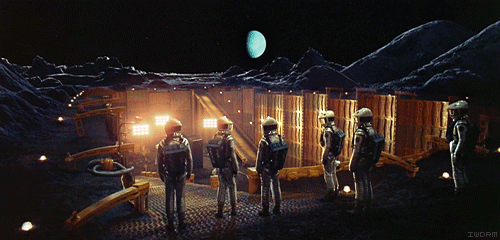-
Posts
632 -
Joined
-
Last visited
Reputation Activity
-
 Hans Punk got a reaction from Ki Rin in Best drone shot ever?
Hans Punk got a reaction from Ki Rin in Best drone shot ever?
I'm sure this is up there with some of the most impressive single take drone shots I've seen for a while, carried out by a very talented pilot using a micro FPV drone and great use of Reelsteady software. Use of reverse playback and sound design makes it even more impressive...
making of...
-
 Hans Punk got a reaction from OliKMIA in Best drone shot ever?
Hans Punk got a reaction from OliKMIA in Best drone shot ever?
I'm sure this is up there with some of the most impressive single take drone shots I've seen for a while, carried out by a very talented pilot using a micro FPV drone and great use of Reelsteady software. Use of reverse playback and sound design makes it even more impressive...
making of...
-
 Hans Punk got a reaction from dahlfors in Best drone shot ever?
Hans Punk got a reaction from dahlfors in Best drone shot ever?
I'm sure this is up there with some of the most impressive single take drone shots I've seen for a while, carried out by a very talented pilot using a micro FPV drone and great use of Reelsteady software. Use of reverse playback and sound design makes it even more impressive...
making of...
-
 Hans Punk got a reaction from deezid in Best drone shot ever?
Hans Punk got a reaction from deezid in Best drone shot ever?
I'm sure this is up there with some of the most impressive single take drone shots I've seen for a while, carried out by a very talented pilot using a micro FPV drone and great use of Reelsteady software. Use of reverse playback and sound design makes it even more impressive...
making of...
-
 Hans Punk got a reaction from TwoScoops in Best drone shot ever?
Hans Punk got a reaction from TwoScoops in Best drone shot ever?
I'm sure this is up there with some of the most impressive single take drone shots I've seen for a while, carried out by a very talented pilot using a micro FPV drone and great use of Reelsteady software. Use of reverse playback and sound design makes it even more impressive...
making of...
-
 Hans Punk got a reaction from HelsinkiZim in Best drone shot ever?
Hans Punk got a reaction from HelsinkiZim in Best drone shot ever?
I'm sure this is up there with some of the most impressive single take drone shots I've seen for a while, carried out by a very talented pilot using a micro FPV drone and great use of Reelsteady software. Use of reverse playback and sound design makes it even more impressive...
making of...
-
 Hans Punk reacted to Jordan Palmer Wiens in 1DC Discontinued
Hans Punk reacted to Jordan Palmer Wiens in 1DC Discontinued
I think it's the 1dx taking RAW stills through the miniatures not video, much like a really slow timelapse.
-
 Hans Punk got a reaction from Mr. Ambiguous in 77-75mm step-down, any ideas?
Hans Punk got a reaction from Mr. Ambiguous in 77-75mm step-down, any ideas?
Just found this guy who makes adaptor ring for DNA front and rear use...quite decent designs, but still does not address vignette issues or allow larger lenses to be attached easily.
-
 Hans Punk got a reaction from Mr. Ambiguous in 77-75mm step-down, any ideas?
Hans Punk got a reaction from Mr. Ambiguous in 77-75mm step-down, any ideas?
Taking the DNA apart is easy, there are instructions that are supplied when you receive it. You just need a cheap precision screwdriver set to get the small screws out without damaging them and a small hex key to unlock the focus ring. Or whatever the hardcore version needs to open it up (may be slightly different from original DNA design).
I did the work myself, but if you have no experience with a lathe, I strongly advise you find a local metal/machine shop to do it for you. Once you disassemble the lens, removing the rear optic is easy and you are left with the rear section of the DNA body that just needs the rear opening to be enlarged. If you supply the machinist with a 77mm step ring and basically say ' I want this ring to snugly fit inside this hole' - they cannot really go wrong. The only thing they need to be sure of is not to go any deeper than where the housing diameter steps down to where the retainer ring is to hold the rear optic in place - once you have the part in your hand, it is very obvious where the lathe needs to stop removing material.
If you look at my first example picture, you can see that the metal is removed right up to the point that the housing has an internal thread - to allow rear optic to be screwed in with a retainer ring. Once lathe work is complete, spray the area with some acid-etch black primer spray paint to give a hard wearing matte black finish to cover the bare metal...this will eliminate any unwanted reflections to the rear optic and make the lathe job look 'factory'.
You may not need to lathe the rear diameter if you clamp 2 x 72mm empty rings with 77-72mm ring (to effectively give DNA 77mm male rear thread), but you may find that the optic distance and vignette might be too much for your needs, in which case, the lathe method is the way to go...especially when wanting to use DNA on larger lenses.
-
 Hans Punk got a reaction from Amro Othman in Is 8K too much?
Hans Punk got a reaction from Amro Othman in Is 8K too much?
Shooting 8k is not too much.
8k and beyond has/will become more and more necessary for movies that involve heavy visual effects. Being able to work with high resolution plates that have the headroom to allow re-positions and the overall detail boost for blue/green screen work is a huge advantage. When 8k live action is inter-cut with CG characters, the 8k footage (often down-scaled considerably) now matches the resolved detail that CG characters and environments can have (because they do not have to be 'captured' photographically). Traditional techniques of lightly degrading/softening the CG image to match the live action plates is becoming less of a thing when shooting higher resolution 'cleaner' live action elements. 8k is also a no-brainier when it comes to being an attractive acquisition format for archive purposes, it will have a longer shelf life in regards to being compatible with ever-evolving displays and projection systems whenever the 'negative' needs to be revisited.
All of the above has a recent real-world example....Guardians of the Galaxy Vol. 2
Back in the day, Vista Vision format was often employed for effects shots that required optical compositing and many passes through the printer would cause generation loss. Once the larger format of Vista Vision optical composite was down-scaled and printed to 35mm, the grain was effectively reduced to a regular size (or smaller) and the generation loss of detail was no longer apparent since the reduction to 35mm was effectively returning full resolution to that smaller format. ILM were the most famous users of this technique and that is why they became the best in the business...providing the best quality optical composites for effects shots in films.
Although we no longer have optical compositing generation loss to deal with, shooting larger format at 8k+ still has many of the advantages that these old optical tricks gave. The effect of reduction/downscale alone to a lower resolution gives a massive improvement to perceived sharpness, as well as huge reduction in noise - since any noise artifacts are literally shrunk.
I remember when people were asking if upgrading to HD cameras was overkill...how quickly we forget. 4K down-scaled for HD/2K delivery works great, since compression and noise artifacts from footage is visually reduced, So 8k down-scaled to 4/2k projection makes particular sense in this regard. Consumer 4k cameras often have so much in-camera compression applied to get to that resolution, that the image suffers until down-scaled to HD anyway, which is why a solid HD camera with good picture and colour, often trumps a 4k camera, in terms of delivering a pleasing image.
So, shooting cat videos in 8k at home might be too much (unless it is really cute) , but there is an increasing need out there for 8 -16k cameras out there for film production that require visual effect integration...last time I checked, that accounts for most Hollywood releases for the past 25-30 years.
-
 Hans Punk got a reaction from Mr. Ambiguous in 77-75mm step-down, any ideas?
Hans Punk got a reaction from Mr. Ambiguous in 77-75mm step-down, any ideas?
Yes, I used a lathe to open up the rear diameter a few mm's (enough to push a 77mm step ring inside snugly)...and the result? - no useless 75mm rear thread on the DNA anymore. In these pics you can see the mod I did on my DNA (original model) - I expect the Hardcore DNA has the same rear diameter as mine did before I enlarged the rear. Now you can see how I can just drop a 77mm with 72mm step down ring for 72mm lenses...or just keep 77mm step ring for 77mm lenses. The step rings just drop into the new recess, then clamp in tight with the nylon screws.
The larger opening (without step rings installed) now allows me to use the DNA on my larger Kowa inflight 1.75x lens and get the optics way closer than the original design..
-
 Hans Punk got a reaction from Timotheus in 77-75mm step-down, any ideas?
Hans Punk got a reaction from Timotheus in 77-75mm step-down, any ideas?
Yes, I used a lathe to open up the rear diameter a few mm's (enough to push a 77mm step ring inside snugly)...and the result? - no useless 75mm rear thread on the DNA anymore. In these pics you can see the mod I did on my DNA (original model) - I expect the Hardcore DNA has the same rear diameter as mine did before I enlarged the rear. Now you can see how I can just drop a 77mm with 72mm step down ring for 72mm lenses...or just keep 77mm step ring for 77mm lenses. The step rings just drop into the new recess, then clamp in tight with the nylon screws.
The larger opening (without step rings installed) now allows me to use the DNA on my larger Kowa inflight 1.75x lens and get the optics way closer than the original design..
-
 Hans Punk got a reaction from Mr. Ambiguous in 77-75mm step-down, any ideas?
Hans Punk got a reaction from Mr. Ambiguous in 77-75mm step-down, any ideas?
From memory, that will work (with 72mm rings).
I have since machined out the rear of my Core DNA to accept two 77mm step rings to be clamped into the rear, works very well...the outer rear 77mm thread is now in the ideal position.
-
 Hans Punk got a reaction from Mr. Ambiguous in 77-75mm step-down, any ideas?
Hans Punk got a reaction from Mr. Ambiguous in 77-75mm step-down, any ideas?
First use a 77-72mm step down ring, then add one or two 72mm uv filters with glass removed...making a shallow hood, giving enough thickness for the Core DNA to firmly clamp on the outside diameter of the 72mm step rings (as if it was a lens front).
-
 Hans Punk got a reaction from Timotheus in 77-75mm step-down, any ideas?
Hans Punk got a reaction from Timotheus in 77-75mm step-down, any ideas?
First use a 77-72mm step down ring, then add one or two 72mm uv filters with glass removed...making a shallow hood, giving enough thickness for the Core DNA to firmly clamp on the outside diameter of the 72mm step rings (as if it was a lens front).
-
 Hans Punk got a reaction from Dan Wake in how to simulate the original "shake" of the old movies shot on film?
Hans Punk got a reaction from Dan Wake in how to simulate the original "shake" of the old movies shot on film?
That looks good to me, very similar to what the Wiggle expression does when dialled down to low parameters in After effects. It is perhaps not a traditional side to side 'Gate Weave' look, but definitely gives a physicality to the locked off shots that look quite natural.
The rhythm to that movement is similar to operator breathing whilst holding a heavier camera as steady as they can...so it is not distracting IMHO. The advantage of adding post moves like this - is that is can (as in your example) make the camera appear to have added weight, and that its nodal point to be further back...like a physically larger and heavier camera. This little visual cue can often give the viewer the impression that it has been shot on a 'movie camera', rather than a super light weight dslr. I often apply stabilisation to my footage (even for tripod pans) at a very low setting. This gives a similar effect of a larger camera being used, since it dampens the camera moves to appear to be a bit softer.
you could even go a bit more subtle for the longer takes - the nice thing is it that these subtle moves work great when very little movement is introduced...just enough to break the staticness of a locked of tripod shot (if that is the intended look).
-
 Hans Punk reacted to Dan Wake in how to simulate the original "shake" of the old movies shot on film?
Hans Punk reacted to Dan Wake in how to simulate the original "shake" of the old movies shot on film?
I just made a little test, the video has been shot in few minutes (I had no time even for correct framing, focus, I was in hurry I just made it to test this plugin so I used a little tripod to be super stedy). Sorry also for color correction.
Tested one of the Jarle’s Deadpool Handheld Camera presets. I made it because I wish to ask you your feeling about your suspension of disbelief, let me know please.
-
 Hans Punk got a reaction from TheRenaissanceMan in Is 8K too much?
Hans Punk got a reaction from TheRenaissanceMan in Is 8K too much?
Shooting 8k is not too much.
8k and beyond has/will become more and more necessary for movies that involve heavy visual effects. Being able to work with high resolution plates that have the headroom to allow re-positions and the overall detail boost for blue/green screen work is a huge advantage. When 8k live action is inter-cut with CG characters, the 8k footage (often down-scaled considerably) now matches the resolved detail that CG characters and environments can have (because they do not have to be 'captured' photographically). Traditional techniques of lightly degrading/softening the CG image to match the live action plates is becoming less of a thing when shooting higher resolution 'cleaner' live action elements. 8k is also a no-brainier when it comes to being an attractive acquisition format for archive purposes, it will have a longer shelf life in regards to being compatible with ever-evolving displays and projection systems whenever the 'negative' needs to be revisited.
All of the above has a recent real-world example....Guardians of the Galaxy Vol. 2
Back in the day, Vista Vision format was often employed for effects shots that required optical compositing and many passes through the printer would cause generation loss. Once the larger format of Vista Vision optical composite was down-scaled and printed to 35mm, the grain was effectively reduced to a regular size (or smaller) and the generation loss of detail was no longer apparent since the reduction to 35mm was effectively returning full resolution to that smaller format. ILM were the most famous users of this technique and that is why they became the best in the business...providing the best quality optical composites for effects shots in films.
Although we no longer have optical compositing generation loss to deal with, shooting larger format at 8k+ still has many of the advantages that these old optical tricks gave. The effect of reduction/downscale alone to a lower resolution gives a massive improvement to perceived sharpness, as well as huge reduction in noise - since any noise artifacts are literally shrunk.
I remember when people were asking if upgrading to HD cameras was overkill...how quickly we forget. 4K down-scaled for HD/2K delivery works great, since compression and noise artifacts from footage is visually reduced, So 8k down-scaled to 4/2k projection makes particular sense in this regard. Consumer 4k cameras often have so much in-camera compression applied to get to that resolution, that the image suffers until down-scaled to HD anyway, which is why a solid HD camera with good picture and colour, often trumps a 4k camera, in terms of delivering a pleasing image.
So, shooting cat videos in 8k at home might be too much (unless it is really cute) , but there is an increasing need out there for 8 -16k cameras out there for film production that require visual effect integration...last time I checked, that accounts for most Hollywood releases for the past 25-30 years.
-
 Hans Punk got a reaction from sudopera in Is 8K too much?
Hans Punk got a reaction from sudopera in Is 8K too much?
The trickle down effect from 8k cinema to consumer model cameras will inevitably happen, where horrible colours and in-camera sharpening and compression will no doubt be employed. Codec support and media will be slow to catch up and be supported as a standard...much like happened with 4K. Marketing will indeed by hyped, clients will assume more resolution is better etc...it's the same story each time.
I wouldn't be too concerned though, it's a long way off until existing HD and 4K is properly implimented yet. Many broadcasters and web platforms are still yet to catch up. The distribution and processing of high bandwidth data is always going to be the bottleneck...it takes time for the price point of many factors to converge for these things to become economically viable enough to implement for mass consumption.
8k camera acquisition gives amazing options for filmmakers to implement for 4K/2k delivery but 8k as a resolution for consumer presentation and delivery...is a long way off (and mostly pointless in many cases for traditional projection viewing). If a wedding client specifically asks for an 8k delivery anytime soon, then they either have a suitable budget to give you for the job, or are completely clueless.
Good colour science and dynamic range is what most camera manufacturers know is what makes good pictures, resolution boost is a bonus if it does not complicate workflow too much. But as happened with HD/4K buzz when it was new...you will initially have a load of crap coming out so it can wear that 8k badge on its side.
I suspect that s35 will be less of a standard with these bigger sensors becoming more common. The Red helium 8k VV looks like the way things are heading...camera-wise at least. That camera in particular is the first thing produced by Red that I think delivers on their braggy-jock rockstar attitude that they used to throw around.
-
 Hans Punk got a reaction from Dick Sweeney in Is 8K too much?
Hans Punk got a reaction from Dick Sweeney in Is 8K too much?
...saying that, the example video does look a bit distracting, mainly because the detail is being combined with very deep depth of field, causing a bit of 'sensory overload' - especially when subjects have vivid colour. I'm also not sure how many actors and actresses will appreciate every pour of their skin being revealed in a closeup at 8k, they complain enough as it is at 4K which is why digital makeup has become a very common thing these days. My guess is that by the time affordable 8k consumer cameras become common place, I suspect the actual resolving resolution will be closer to 4K after broadcast/streaming compression takes its toll, not to mention whatever tricks the camera is doing at source to quickly write to compact media.
For now, Red seem to be getting it working pretty well. Mark Toia seems to describe the advantages of 8k as a capture format quite nicely (even though it's a bit of a sales pitch)..
-
 Hans Punk got a reaction from sudopera in Is 8K too much?
Hans Punk got a reaction from sudopera in Is 8K too much?
Shooting 8k is not too much.
8k and beyond has/will become more and more necessary for movies that involve heavy visual effects. Being able to work with high resolution plates that have the headroom to allow re-positions and the overall detail boost for blue/green screen work is a huge advantage. When 8k live action is inter-cut with CG characters, the 8k footage (often down-scaled considerably) now matches the resolved detail that CG characters and environments can have (because they do not have to be 'captured' photographically). Traditional techniques of lightly degrading/softening the CG image to match the live action plates is becoming less of a thing when shooting higher resolution 'cleaner' live action elements. 8k is also a no-brainier when it comes to being an attractive acquisition format for archive purposes, it will have a longer shelf life in regards to being compatible with ever-evolving displays and projection systems whenever the 'negative' needs to be revisited.
All of the above has a recent real-world example....Guardians of the Galaxy Vol. 2
Back in the day, Vista Vision format was often employed for effects shots that required optical compositing and many passes through the printer would cause generation loss. Once the larger format of Vista Vision optical composite was down-scaled and printed to 35mm, the grain was effectively reduced to a regular size (or smaller) and the generation loss of detail was no longer apparent since the reduction to 35mm was effectively returning full resolution to that smaller format. ILM were the most famous users of this technique and that is why they became the best in the business...providing the best quality optical composites for effects shots in films.
Although we no longer have optical compositing generation loss to deal with, shooting larger format at 8k+ still has many of the advantages that these old optical tricks gave. The effect of reduction/downscale alone to a lower resolution gives a massive improvement to perceived sharpness, as well as huge reduction in noise - since any noise artifacts are literally shrunk.
I remember when people were asking if upgrading to HD cameras was overkill...how quickly we forget. 4K down-scaled for HD/2K delivery works great, since compression and noise artifacts from footage is visually reduced, So 8k down-scaled to 4/2k projection makes particular sense in this regard. Consumer 4k cameras often have so much in-camera compression applied to get to that resolution, that the image suffers until down-scaled to HD anyway, which is why a solid HD camera with good picture and colour, often trumps a 4k camera, in terms of delivering a pleasing image.
So, shooting cat videos in 8k at home might be too much (unless it is really cute) , but there is an increasing need out there for 8 -16k cameras out there for film production that require visual effect integration...last time I checked, that accounts for most Hollywood releases for the past 25-30 years.
-
 Hans Punk reacted to SigurdW in No Joke - RAW 4K on the 5D Mark III
Hans Punk reacted to SigurdW in No Joke - RAW 4K on the 5D Mark III
Finally managed to get my head around processing crop_rec material, so did a small test at around 2.7K mastered in 3.4K Anamorphic
Setup:
5D3
Helios 44M
Bolex-Anamorphot 32/16/1.5x
Graded using @hyalinejim Kodak Ektar 100D TWISTED lut (Thanks!!).
-
 Hans Punk reacted to EnzoNgu in The Diopter Thread.
Hans Punk reacted to EnzoNgu in The Diopter Thread.
Hans, thanks for the suggestion. I contacted Raf and we are working on a solution. I'll post some pics when I have the adapter.
-
 Hans Punk got a reaction from enny in Any info on this anamorphic lens?
Hans Punk got a reaction from enny in Any info on this anamorphic lens?
It indeed looks like either part of an optical printer or reconfigured to or from print duplication use. Seen this lens being re-sold 2 or 3 times from different sellers without much time between auctions - which raises alarm bells as to its real practicality for filmmaking use (and where is footage of it at infinity and variable stops?). No doubt the optics are going to be top notch but I'd want to be assured that its focus can hit infinity with that aperture inside (causing added space between optics), since I would presume that lens was always intended for closeup duplication use, as part of a specific optical printer or telecine machine. I suspect that the variable aperture inside the lens is not going to make the image much sharper when coupled with a taking lens, but rather cut the light transmission to the taking lens and dramatically increase vignette.
In a nutshell, if it was the wonder lens that it is supposed to be, where is example footage of it resolving infinity focus and its results when stopping down with its internal aperture?
EDIT: Found an expired eBay auction that sold for $250 that confirms my hunch...
"This is is multiple lens assembly that was used at Deluxe Film Laboratories in Hollywood for 35mm anamorphic conversion to flat formats for theatrical trailers. It should not be confused with camera or projector lenses. Printing lenses are ulta sharp intermediate lenses designed to resolve 35mm camera original high resolution color negative without distortion. The assembly consists consists of three separate lenses, each of which may be separated for individual use:
Isco Lens VII - Base Lens
Isco Anamophis Printing Lense 2x with Manual IRIS Ring (Like F-Stop)
Isco Lens III - Output Lens
I highly doubt the Isco printing lens can hit infinity without stopping it down to a crazy small aperture. You can see from the original configuration that it is basically used for near-macro focus distances, as part of an optical conversion chain. If it could indeed be used for filmmaking use, I would be interested to hear how on earth you would achieve infinity focus.
I think the current seller on eBay is a member of this forum @Hunterj11
perhaps they can shine some light on this lens?
-
 Hans Punk got a reaction from BTM_Pix in how to simulate the original "shake" of the old movies shot on film?
Hans Punk got a reaction from BTM_Pix in how to simulate the original "shake" of the old movies shot on film?
Totally agree.
The human brain has become so attune to audio and visual input that lots of research is still to be done. The physiological effects of higher frame rates done by Doug Trumbell many years ago is particularly interesting - as it concludes that very high frame rate (way higher than the disastrous 48fps hobbit) has a truly immersive effect to the viewer when projected at the correct brightness. I suspect the growing generation of gamer kids may be more accommodating to the notion of mass adoption of high fps movies in the future. With the correct implementation, this could well be the future of film making and presentation. Then the future kids will probably want to apply motion blur to footage to give it a nostalgic filmic feel.
That is maybe a thing worth remembering, modern film is still clinging (rightly or wrongly) to established rules of frame rate and presentation methods. Silent 16fps black and white film used to be the cutting edge back in the day...so it is probably just a matter of time until we go through another 'advancement' of similar impact.










